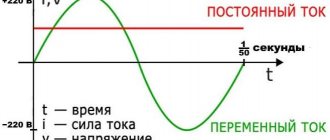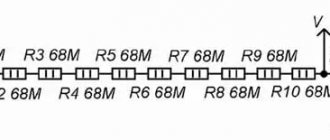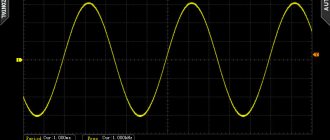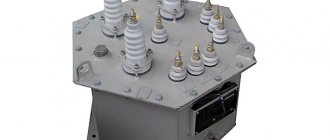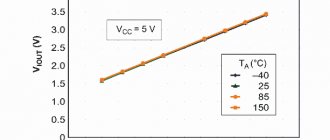Transformer oil is used in high-voltage equipment as an insulating medium, due to its higher electrical strength compared, for example, with gases.
But during operation of oils, their breakdown may occur, that is, loss of the ability to withstand high voltages. A breakdown creates a risk of failure of expensive electrical equipment: transformers, oil-filled cables, capacitors, switches, arresters, etc. To prevent breakdown, liquid dielectrics are tested to measure the breakdown voltage. In this article we will look at how breakdown of liquid dielectrics occurs, the reasons for the decrease in breakdown voltage and how transformer oil is cleaned and tested .
Breakdown of liquid dielectrics
The breakdown of liquid dielectrics is a complex phenomenon that is still being studied. One of the main theories of origin is as follows. If a dielectric (oil) is exposed to high voltage for a long time, and there are inclusions in the oil, then these inclusions are polarized and combined into chains that extend along the electromagnetic field lines. The circuits become a channel through which electric current flows. The current heats the liquid adjacent to the channel to a boil, and breakdown occurs through the resulting gas channel.
In thoroughly refined oils, breakdown can occur due to impact ionization of molecules. After a breakdown, the electrical insulating properties of the oil are restored, but its quality usually deteriorates noticeably.
Aging concept
Aging is an irreversible process in transformer oil, because as it is used, moisture and oxidation products get in one way or another. The operational, chemical, physical properties and heat transfer begin to decrease. The transformer stops working normally.
It is worth carrying out prevention and identifying defects by taking oil samples for analysis.
The properties of the oil are restored through drying, regeneration, and cleaning.
Causes of aging:
- increased acidity;
- formation of sediment on the windings of the transformer;
- deterioration of electrical insulating properties;
- oxidation is an induction process at the initial stage.
Stable oxidation products accumulate in the oil: organic peroxides, water, low molecular weight acids. Gradually the working fluid darkens and becomes cloudy. The ash content and acid number increase. Solid polymerization products begin to float on the surface, clogging the cooling channels of the transformer.
Breakdown voltage of transformer oil
Checking the dielectric properties of oils is carried out by sampling and their subsequent analysis with determination of breakdown voltage, dielectric loss tangent, dielectric constant, etc.
Breakdown voltage is the minimum applied voltage at which a conducting channel is formed in the dielectric. Breakdown voltage is usually measured in kilovolts.
Another similar characteristic is also used - this is the electrical strength (breakdown voltage) of the dielectric. Physically, electrical strength is the voltage that must be applied to a sample for it to break down, divided by the thickness of the sample. Electrical strength is measured in kilovolts per millimeter.
Test procedure and methodology
There is an established procedure for testing transformer oil, it includes three stages:
- Receiving samples . To select a sample, you must follow the appropriate guidelines.
- Carrying out tests according to the chosen method . This can be a complete or partial physicochemical analysis or determination of electrical strength (electric current permeability) under conditions of a certain temperature.
- Summing up the analysis . The test report indicates the results of the tests carried out, and a conclusion is drawn up on the compliance of the tested oil with accepted standards.
Having understood the testing procedure, let’s consider the main methods.
What factors influence the breakdown voltage of transformer oil
Breakdown voltage is a very sensitive parameter of transformer oil, since it can be influenced by various factors. Among them:
- contamination with mechanical impurities and moisture. The dirtier the oil, the lower its breakdown voltage;
- viscosity. Along with a decrease in the viscosity of transformer oil, the breakdown voltage also decreases;
- temperature. As the temperature increases, the breakdown voltage of the oil decreases. When a pulse voltage is applied, this connection is weakly expressed. For highly refined oils, the dependence of breakdown voltage on oil temperature is complex;
- pressure. As the pressure increases, the breakdown voltage increases, which is explained by the increase in pressure in the gas bubbles. The dependence is more pronounced in technically pure oil;
- duration of exposure to voltage. The longer the voltage is applied to the oil, the lower the breakdown voltage. The dependence weakens in oils with a deeper degree of purification;
- shape and area of electrodes, distance between electrodes. With different shapes of electrodes, fields of varying degrees of inhomogeneity are created, and the higher the inhomogeneity coefficient, the lower the breakdown voltage. As the area of the electrodes increases, the breakdown voltage decreases, and as the distance between the electrodes increases, it increases.
Specifications
These liquids must be comparable to the operating conditions of electrical equipment:
- acid number indicating potassium hydroxide (mg) to neutralize free acids;
- viscosity, due to which the oil has cooling properties;
- flash point when liquid vapors ignite from an open flame;
- reaction of an aqueous extract indicating the amount of insoluble acids in the oil;
- breakdown voltage even at the maximum oil level will not allow breakdown of the winding insulation;
- ash content, indicating the quality of washing of fresh oil, because otherwise particles of soap and salts may remain;
- sulfur content, which should also not remain after crude oil refining.
Reference! Sulfur compounds are a chemical element that causes corrosion and contact resistance in switches.
Density
The quality and performance characteristics of the oil depend on the density. The average value at t +20 degrees is 900 kg/m3. As the temperature rises, it decreases. At 0g it is 892 kg/m3.
Density is an important physical indicator of oil, but it depends entirely on the source material.
Viscosity coefficient
Viscosity affects heat exchange processes in a unit filled with oil. It is better if this indicator is underestimated for increased heat transfer from the windings.
Reference! Experts often have disputes regarding the viscosity of transformer oil. Which one to choose for pouring into electrical equipment? High viscosity increases the electrical insulating characteristics of the oil, low viscosity improves cooling properties. In general, viscosity should depend on a certain temperature when the unit is operating. Power transformers are heavy and large. Viscosity is an indispensable part when conducting examination of a working fluid. The average indicator is revealed to the functions.
Experts often make compromises when choosing oil viscosity. When calculating, concepts such as dynamic, kinematic, and specific viscosity are used.
Dynamic
The viscosity coefficient is measured with an Engler viscometer (in degrees). It is calculated using empirical formulas, taking into account the force applied to a solid ball in a liquid:. η = f/6ПrVk, where:
- f – force in (N) acting on a solid ball;
- V – ball speed, m/s;
- r – ball radius (mm);
- k – correction factor depending on the influence of the vessel walls.
Reference! Viscosity in Engler degrees is the time required to consume the oil (200 ml at t+ 50 degrees). The resulting time in calculations is divided by the expiration time, the volume of distilled water (200 ml) at t+20 degrees.
Kinematic
The coefficient obtained by dividing the dynamic viscosity by the density of the transformer fluid.
Viscosity is determined using a Tsinkevich viscometer. The average parameter is 28x10-6 m2/s3. With an increased value, the electrical insulating properties of the oil are improved. Although the cooling capacity is reduced.
Advice! When choosing oil viscosity, you should rely on the average value.
Acid number
The parameter is important when conducting a complete, abbreviated analysis of transformer fluid. Determined in mg of KOH required to neutralize 1 g of petroleum product
Acid number is a standardized indicator indicating:
- degree of wear, corrosion of metal surfaces;
- possible reduction in the dielectric strength of the oil;
- amount of naphthenic acids (%), decomposition products in oil;
- the need for regeneration in order to extend the service life of the installation, restore the dielectric strength, and the chemical composition of the electrical insulating liquid.
Temperature
Oil is extracted from refined oil by bringing to a boil at t +300+400 degrees. Next, the transformer liquid is cleaned.
The flash point, pour point, and boiling point indicate the degree of freshness of the oil and are important during diagnostics.
Flashes
Flashing is heating oil to a temperature where it combines with air to form a flammable mixture. The fuel liquid does not even have time to ignite.
Important! The flash point is normal - no higher than + 135 g. If heated above the flash point, the oil will simply ignite when a match is applied.
Solidification
The pour point is up to -40 degrees, in the southern regions up to -35.
This term refers to oil that begins to harden to such an extent that if the test tube is tilted at an angle of 45 degrees, it simply does not drain from the walls for 1 minute.
The pour point in oil switches is an important parameter. Cooled butter should not solidify at temperatures above 45 degrees. Although it all depends on the location of oil filling (switch, transformer), operating mode of the equipment (outdoors, indoors).
Boiling
The normal boiling point is +300+400 degrees. This is the final stage, during which pure transformer oil is obtained after purification from distillates.
Specific mass heat capacity
Measured according to the SI system for industrial oil in J/kg. The high heat capacity of the oil allows heat to be dissipated from different areas of circulation in the equipment. But this is not a constant value. Completely depends on the ambient temperature.
The average heat capacity for transformer oil is 1.67-2.5 kJ / kg. The coefficient during experiments is calculated by a special nomograph.
Thermal conductivity
Thermal conductivity (0-120 degrees) changes with aging, accumulation of harmful components, water, mechanical impurities, gases in the oil. If it decreases significantly, then the electrical insulating environment in the transformer and heat removal from the heating element are disrupted.
The thermal conductivity coefficient (λ, W/(m'K) completely depends on the oil temperature. For example, at 0 degrees it is – 0.1123, at +120 degrees – 0.1022.
Volume expansion
The indicator is not standardized, depending on temperature. At t +20 degrees it is equal to 0.856-0.886.
It is easy to guess that the value will decrease with increasing temperature and increase as the liquid cools. At t +1 it is 0.0007. At t +100 degrees, the expansion volume will change by 7%.
The volumetric expansion of transformer oil is determined by the Hydrometer device:
- a portion of oil is taken from the transformer;
- placed in a glass cylinder, then in a hydrometer;
- counting is carried out along the upper edge of the meniscus.
Important! Power heat units operate over a wide temperature range. The ratio of conservator volume to oil volume should be 8-9%. The numerical coefficient for electrical insulating oil is on average 0.0007 per 1 ºС.
Prandtl criterion
The physical indicator of the transformer dielectric medium is calculated using the formula: Pr = n/a = mcp/l:
- n = m/r—kinematic viscosity coefficient;
- m is the dynamic viscosity coefficient;
- r—density;
- l is the thermal conductivity coefficient;
- a = l/rcp - thermal diffusivity coefficient;
- cp is the specific heat of the medium at constant pressure.
The number allows you to determine the physical characteristics of the medium and its thermodynamic state. The indicator will change with temperature fluctuations: 0 °C Pr = 866, 100 °C Pr = 43.9.
Color
Fresh oil is light yellow. As it wears, it changes to a dark brown tint.
Color is not the main parameter of the oil, but can reflect the degree of freshness.
Ash content
During oil processing, soaps and salts inevitably accumulate. Even a small amount of them is an indicator of poor flushing, leaving unwanted sediment.
Sulfur content
The oil is extracted from crude oil, so some of the sulfur compound may remain. This chemical element provokes corrosion, increasing the resistance of contacts in switches.
Sulfur content (%) is calculated using a copper plate placed in the transformer oil during diagnostics.
Sodium test
Method for identifying the degree of quality of transformer fluid. How free it is from impurities, soap, salts.
The sodium test indicates the oil's stability to oxidation. If it is too high, it means that foreign contaminants remain in the liquid even after washing.
Transformer oil breakdown test
Oil breakdown testing , as a rule, is performed in the laboratory, but if you have the necessary equipment, you can measure the breakdown voltage near the transformer.
Testing transformer oil for breakdown is carried out in accordance with current standards. These can be either national standards of the countries in which transformers are operated, or international standards. The most commonly used are IEC-60296 BDV Tester and ASTM BDV Tester.
Oil breakdown test device
GlobeCore provides world-class quality equipment in the transformer service industry, including laboratory instruments for testing liquid dielectrics . Among them is the TOR-80 oil breakdown test apparatus . It works on the principle of gradually increasing the voltage on the secondary winding of a high-voltage transformer from zero to the maximum value or to the value at which dielectric breakdown occurs. The high voltage shutdown time after a breakdown does not exceed four microseconds. In terms of this indicator, transformer oil testing unit surpasses all existing devices for similar purposes. The oil in the measuring cell does not have time to burn and change its chemical composition, which provides the same conditions for repeated measurements.
In terms of other characteristics and parameters, the best BDV tester GlobeCore is not inferior to any of its known analogues. In the TOR-80 settings, you can select any of the current standards for electrical test methods (IEC 60156, ASTM D877, GOST 6581, etc.). Even if the standard has changed over time, the user can quickly make the necessary adjustments and continue testing the oil using the current algorithm. Therefore, the inexpensive BDV tester can be used in any country in the world. It is also used to test liquid dielectrics of various origins with a breakdown voltage not exceeding 80 kilovolts, made from petroleum, vegetable oils or obtained synthetically.
The device has compact dimensions: width – 49 centimeters, length – 32 centimeters and height – 30 centimeters, as well as handles integrated into the body, with which it can be easily moved inside the laboratory or transferred from one room to another.
The process of oil breakdown testing is simple. An employee of an electrical engineering laboratory needs to connect the device to the power supply, insert the measuring cell, fill it with oil, select the required standard and start the process by pressing the appropriate button. BDV tester the rest automatically, after which within five minutes the result of the first measurement of the breakdown voltage in kilovolts will appear on the display.
The measurement error of breakdown voltage after a test cycle does not exceed one percent. This accuracy is achieved through technologies developed by GlobeCore and new industry standards.
At the same time, the device remains convenient and practical. If necessary, the measurement results can be printed on the built-in thermal printer or the accumulated data array can be transferred using a flash drive from the internal non-volatile memory to a computer for subsequent statistical processing and visualization.
If the operating rules are followed, the use of TOR-80 is safe for laboratory personnel. The top cover not only protects the samples and work area from contamination, but is also equipped with a position control device. When the cover is in the “open” position, the rise in test voltage is blocked and electric shock is excluded.
Before being sent to the laboratories of electric power companies, all devices are checked to ensure compliance with technical requirements and characteristics by testing real oil samples, for which no less than 900 measurements are taken, which is equivalent to 150 test cycles, as well as checking using high-precision kilovoltmeters.
Testing oils using GlobeCore allows you to quickly identify a critical decrease in breakdown voltage and quickly make a decision about replacing or cleaning the oil.
Rules for drawing up a test report
The protocol template is usually printed on a computer; basic information can be entered into it either by hand or in printed form. It is permissible to draw up the document on a regular A4 sheet or on the company’s letterhead - the second option frees you from the need to enter the company details manually.
The protocol must be certified with the original signatures of the responsible persons.
At the same time, it is not necessary to put a stamp on it, since since 2016, the presence of seals and stamps for legal entities is not a legal requirement (i.e., documents can be stamped only with the voluntary expression of the will of the company’s management).
The protocol is written in as many copies as necessary for all interested parties. After losing its relevance, the document is transferred for storage to the archive of the enterprise, where it is kept for the period established for such papers.
Transformer oil is tested at high voltage, which can be deadly for a non-specialist. Our electrical laboratory specialists will perform this work safely, quickly and efficiently. The transformer oil testing procedure itself can be divided into several separate stages, such as:
– Oil sampling;
Let's look at each of the stages in more detail.
Oil sampling.
The main task of the personnel during sampling is to ensure the quality of the sample. Careless sampling or contamination of sampling vessels leads to erroneous conclusions regarding the quality of the oil and to unjustified losses of time, labor and costs for transportation and control of samples, i.e. Correct and competent sampling is the most important factor for obtaining reliable test results. When sampling operating oil, the following basic rules should be observed:
– carry out sampling after the necessary special training of personnel;
– avoid sampling in bad weather;
– use only specially prepared clean and dry containers – glass bottles – which are transported to the sampling site hermetically sealed and preferably in a special container or box to eliminate the risk of contamination;
– drain a sufficient amount of oil (at least two liters) to remove any contaminants that may be on the sampling pipe;
– rinse the sampling container with the sampled oil (twice);
– ensure that each vessel is filled to at least 95% of its capacity, it is advisable to use clean and dry silicone hoses that are immersed to the bottom of the vessel;
– seal the vessel immediately after filling it with a stopper, preferably made of polyethylene or oil-resistant rubber;
– restore the original appearance of the sampling point after sampling;
– check the correctness and completeness of the label;
– store sample samples in a dark and cool place, if transparent bottles were used as a sampler, avoid close contact with a heat source.
Sampling from the equipment is carried out during normal operation or immediately after it is turned off. This recommendation is especially important to follow when moisture content or characteristics dependent on it are determined (Upr, tgδ, etc.). Once samples are delivered to the laboratory, do not immediately open the containers and begin testing, but rather wait until the sample reaches room temperature.
Visual inspection of transformer oil
Visual inspection is performed by examining the liquid dielectric in a sample or in a cuvette with a layer thickness of 10 mm in transmitted light, determining its color (comparison with a number of color standards is possible), the presence of impurities in it (mechanical impurities, dispersed water, sediments), and transparency. The control result is considered unsatisfactory if the liquid contains visible impurities, if it is cloudy or has darkened significantly compared to the previous test. It should be noted that visual inspection is not the main criterion for rejecting transformer oil. Based on the results of visual inspection, a decision is made to conduct additional laboratory tests to determine moisture content, the presence of sediment or the content of mechanical impurities, as well as other quality indicators. If additional laboratory tests confirm unsatisfactory results of visual inspection, then the test report indicates the need to replace, clean and regenerate the transformer oil.
Continuous BDV test in stream
In addition to laboratory analyses, of practical interest for transformer owners and service organizations is the ability to determine the breakdown voltage of the oil online, that is, without sampling. GlobeCore company produces an online BDV tester, or more precisely, an entire diagnostic system TOR-5 , which allows you to determine important parameters of transformer oil. TOR-5 is installed near the transformer and connected to it. Once connected, the oil continuously circulates in a closed circuit through the sensors. Sensors measure important oil parameters. In addition to the fact that these parameters themselves are diagnostic information, additional indicators are also calculated from them, which give a more complete picture of the condition of the transformer oil online. One of the calculated indicators is the breakdown voltage of the oil.
All measured and calculated parameters are accumulated at a frequency of once per minute and are available for viewing and analysis in a special web application, which can be opened anywhere in the world if you have access to the Internet.
Scope and frequency of tests
According to current standards, oil is tested in the following cases:
- During the storage of electrical devices . The frequency of testing depends on the voltage class of the equipment. For example, oil in devices up to 35.0 kV is tested every six months, and in equipment designed for 110.0 kV or more, tests are carried out every 4 months. If the filling was carried out with fresh transformer oils, then checking the electrical strength is sufficient, otherwise a shortened chemical analysis is performed.
- Before starting work . A sample from the equipment tank must be taken before turning on transformers or other devices that use oil. The scope of testing is specified by the manufacturer of electrical equipment.
- During the operation of oil switches , high-voltage transformers, special current measuring devices, etc. The frequency of testing depends on the purpose of the equipment and the voltage class. For example, for power transformers up to 35.0 kV, tests are carried out at the following frequency:
- Once put into operation 5 times during the first month, with 3 tests to be performed in the first two weeks, remaining in the next two weeks.
- Next, measurements are taken at intervals of 4 months.

